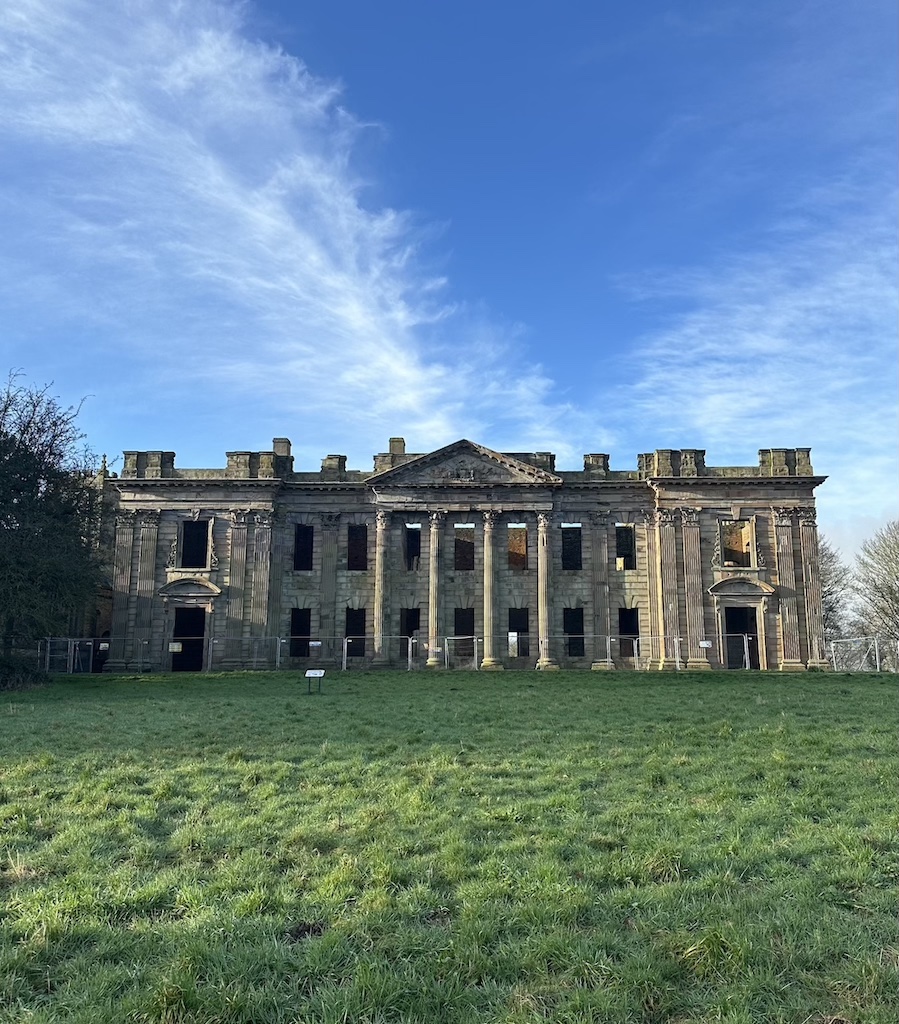
The fate of one English Country House
If you are driving North on the M1 in Derbyshire, you might spot the majestic ruins of Sutton Scarsdale high up on the hill. Its roof is open to the sky, the sash windows are empty and the once fine interiors have been removed.
This historic house was built between 1724 and 1729, for the 4th Earl of Scarsdale. He commissioned the architect Francis Smith to skilfully incorporate the earlier building of about 1469 within its layout. The finest craftsmen were employed to carve elegant exterior stonework and create stucco detailing in the principal rooms. However, the cost of the building left the Scarsdale family short of funds and it passed through a number of buyers (included the Arkwright family) before being sold to asset strippers in 1919.
Some of the rooms still exist, with three interiors on display at the Museum of Art in Philadelphia and a further panelled room in the Huntingdon Library, California. The shell of the building was saved from demolition in 1946 and has stood open to the elements for decades. English Heritage are now working to preserve and protect what is left.
Hundreds of English Country Houses suffered a similar fate in the 1900s as they often became too expensive to run. Some have disappeared all together. There is an excellent book about them by Roy Strong, Marcus Binney & John Harris called ‘The destruction of the Country House’.
Sutton Scarsdale is still majestic in its own way. If you turn away and look to the other side of the motorway, you can also see Bolsover Castle and Hardwick Hall in the distance. A handsome trio of the Great Houses of Derbyshire!
